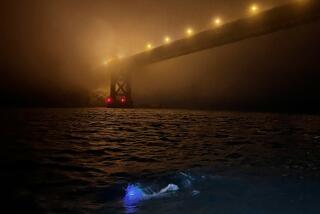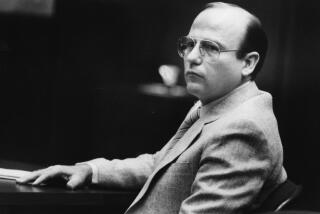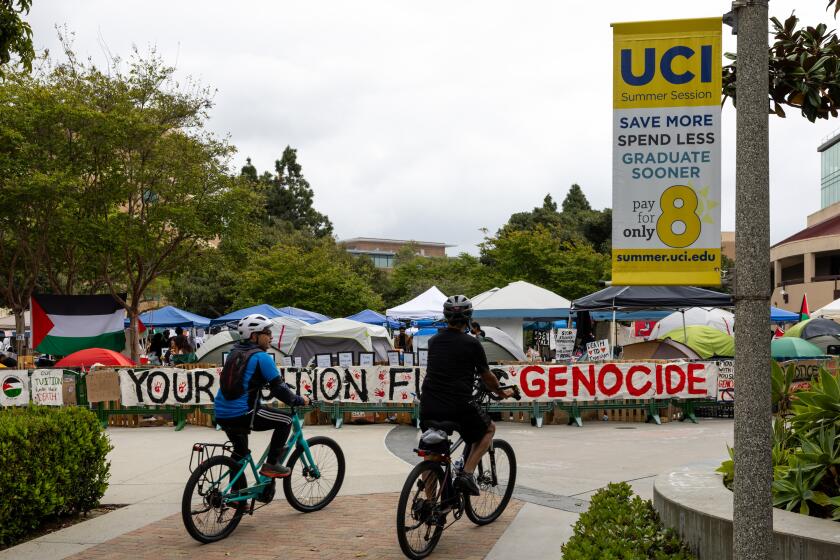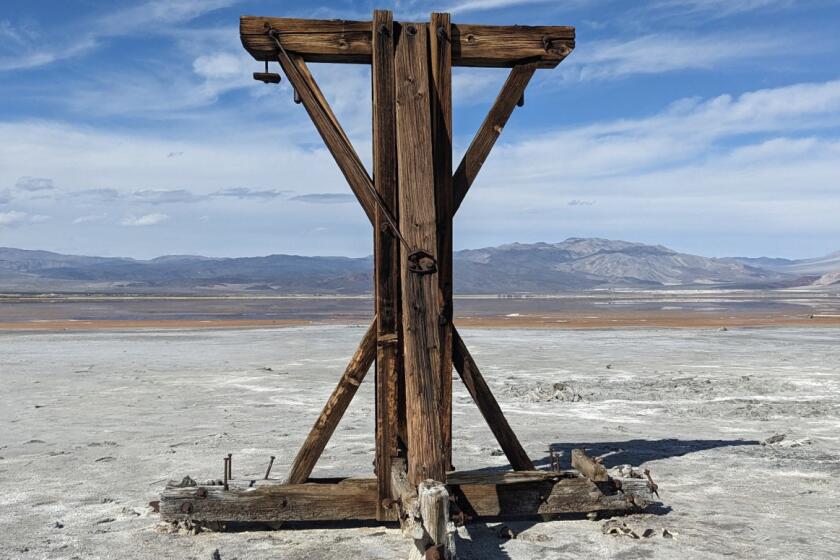The Mountain Is Crumbling at Long Last
The pile of freeway rubble five stories tall has towered over a quiet Huntington Park neighborhood for seven years, menacing residents with airborne dust and earning an ominous name: La Montana, or the mountain.
But La Montana is finally crumbling.
On Monday, a bulldozer plowed into the 50-foot-high remains of the earthquake-damaged Santa Monica Freeway, as workers fed concrete into a giant crusher machine that pulverized 100-pound slabs into inch-sized chunks.
La Montana will not be completely crushed soon. It sprawls over five acres, and officials say it could take two years to grind up and sell the estimated 200,000 tons of concrete. But residents were joyous that their grass-roots efforts against what they called eco-racism paid off.
“It’s about time,” said Linda Marquez, a longtime resident who led the community protests. “It’s a wonderful feeling. Kids can go out and play in their yards. . . . We’re probably going to have a celebration one of these days.”
Huntington Park officials expressed relief that work had begun after years of legal battles with the rubble’s original owner, a recycler cited for public nuisance violations who eventually declared bankruptcy.
“What a mess this thing has been,” said Henry Gray, an assistant director of community development. “We always thought it must be removed, but done in a way that minimizes [the environmental] impact.”
No one knew a mountain would rise in the neighborhood.
It began growing in 1994, when businessman Sam Chew agreed to dispose of freeway segments damaged during the Northridge earthquake. His plan: Store the concrete at the 5 1/2-acre lot off South Alameda Street, grind it up and sell it as roadbed.
But the rubble piled up faster than he could sell it, and trucks arrived day and night, dumping their loads of concrete and kicking up dust clouds that settled over nearby houses and apartments.
Soon, City Hall was inundated with complaints from residents who said the dust left them short of breath and caused headaches and bloody noses. The dust, they said, also coated their gardens, killing plants.
Though a study by the South Coast Air Quality Management District failed to link health problems to the rubble, residents continued to take precautions. They keep doors and windows shut and won’t allow their children to play outdoors for long periods of time. Many installed air cleaners to filter out the dust. Some residents in the immigrant neighborhood moved back to Mexico after their children’s asthma-like conditions persisted.
“It was just horrendous, especially when the wind whipped up in the afternoon in the summertime,” said Leilani Hickman, who said she still dusts her apartment twice a day and laments that all of her fruit trees are dying.
In 1996, city officials declared the site a public nuisance, launching a tortuous legal battle against Chew. In 1998, Chew pleaded no contest to nine nuisance counts and was ordered by a judge to remove the rubble and serve 100 days of community service.
But Chew declared bankruptcy, causing further delays. Last year, Chew finally gave up ownership of the mound, clearing the way for the city to find the new contractor, CW Poss Inc.
Company officials say they can crush up to 2,500 tons of concrete per day. But complete removal will depend on market conditions for the pulverized concrete, which is used as roadbed.
La Montana remains a craggy-ridged expanse of chopped concrete and twisted metal that spills over a half-block on the city’s eastern end. One cliff of jagged concrete slopes steeply to within a few feet of neatly kept backyards.
Atop the wind-swept mound with panoramic views of southeast Los Angeles County is a small field of dandelions, trees and bushes: La Montana’s own ecosystem. “That tells you how old it is. It’s been here a while,” said Kim Woehrmann, a company foreman.
More to Read
Start your day right
Sign up for Essential California for news, features and recommendations from the L.A. Times and beyond in your inbox six days a week.
You may occasionally receive promotional content from the Los Angeles Times.







